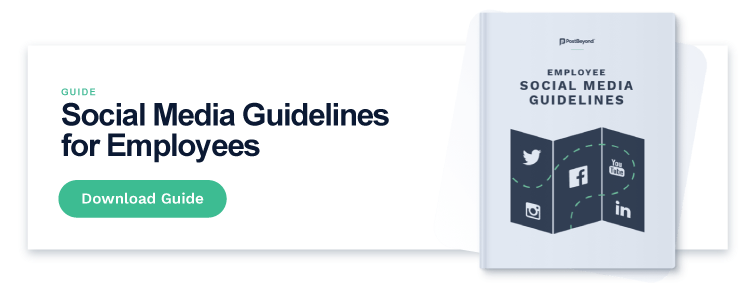‘Interpersonal communication’ is an incredibly important skill. Unfortunately, because we use the term so much (just look at any job posting these days), it’s easy to overlook its value. But there’s a reason why it’s asked for everywhere. It’s key to every function requiring the need to engage people.
“Engaging people” is where it matters for marketers. However, we know that the list of how and where we communicate with people is always growing. In fact, it’s also evolving. Even online, we’ve gone from a stable of written blogs to videos and memes on social media.
Remarkably, the fundamentals of interpersonal communication still matter, though how we apply them have changed. Here’s what you need to know:
What Is Interpersonal Communication?
Interpersonal communication is a process in which two or more people exchange information through verbal and non-verbal means. That information often takes the form of words, feelings, gestures and body language. In today’s work environment, interpersonal communication also happens digitally through email, social media posts, chats as well as audio and video calls.
Interpersonal communication takes many forms too. We’re familiar with the conversational side of it, especially between people. But it takes place between organizations and people (such as a company newsletter) and between brands (e.g. when two or more brand channels ‘talk’ to each other on social media through mentions and replies).
6 Interpersonal Communication Types

1. Spoken/Oral
Speaking could very well be the oldest form of interpersonal communication, ever. This covers conversations between people, speeches to groups, interviews, meetings, daily stand-ups and countless other scenarios that, simply put, require us to speak.
That said, there’s more to spoken or oral communication than just our words. How we deliver our words through our tone, clarity and talking speed also shape how others get our message.
Likewise, filler words (or the lack thereof) can also influence the impact of what we’re saying.
2. Written
Writing is a hugely versatile form of interpersonal communication. On one end, we use short and trite messages to run our teams and day-to-day operations. On the other end, we’re also writing blog articles to speak to an audience we don’t personally know.
In either scenario, written communication is effective provided we use the best form in the right situation. It also means we need to tune our skills for many mediums, such as:
- Emails
- Memos
- Blogs
- Whitepapers
- eBooks
- News/publication articles
- LinkedIn posts
- Facebook posts
3. Chat/Messaging
This could technically be under written communication, but instant chatting and messaging have come a long way over the decades. With gifs, emojis, and even videos in the mix, instant chat is becoming a unique form of interpersonal communication.
4. Social Media
Like chats, social media could technically fall under written or spoken communication (based on the platform). However, social is increasingly melding different ways of communication into new and unique styles. You can’t neatly fit a TikTok video into spoken, non-verbal, or any one form of communication. Likewise, 3D metaverses by Facebook or Microsoft are aiming to move how we communicate with each other into entirely different (and undiscovered) ways.
5. Non-Verbal
If speaking is the oldest form of interpersonal communication, then non-verbal communication is probably the most all-encompassing. It includes everything from our gestures, how we maintain eye-contact in a conversation (and how others interpret it), our facial expressions to reactions, and so much more.
Funnily enough, you don’t even need to be in a conversation with someone to communicate with them non-verbally. How we sit in a meeting can say a lot about what we think or how we feel about a situation, for example. In fact, our gestures might even say more about what we think or feel than our words (beware of those dreaded eye-rolls or sighs).
6. Listening
Listening isn’t the same as hearing. To truly listen, you need to be engaged in the dialogue you’re having with someone. So, following-up with questions, maintaining eye contact and reacting with expressions and gestures are all signs of listening.
Obviously, context matters. Somber scenarios could require you to be stoic, while in others, active listening and engaging are critical. Correctly reading those situations (or ‘rooms’, so to speak) is an aspect of listening as well.
Why Is Interpersonal Communication Important?

Interpersonal communication is important because it helps us engage better with people. By engaging better with people, we’re able to achieve a lot of goals as individual professionals, teams, and organizations, such as:
- Build stronger relationships between people
- Generate new connections
- Motivate teams and organizations
- Become capable leaders
- Resolve conflicts
- Solve problems
- Align better with our organizational or business goals
- Reinforce trust
- Deepen company culture
- Gain new connections (like leads, contacts, etc)
and more.
Basically, interpersonal communication is a bedrock. It’s a foundation or glue or “it” factor that differentiates stronger organizations from less effective ones. This is why a growing number of organizations are asking for strong interpersonal communication skills from job prospects.
7 Effective Interpersonal Communication Tips

The strongest interpersonal communicators are those who can get their points across in as few words as possible. They’re often active participants in lively conversations, not the ones talking to a crowd (unless they were giving a speech). They don’t need to ask for attention or interest – they draw it naturally.
You can see why strong interpersonal communicators are so widely sought. So, what do you need to do to become one? Well, there are seven things you’ll find in strong communicators:
1. Planning
It may sound odd, but effective interpersonal communication rests on planning.
The strongest communicators build an awareness of their audience. They wouldn’t speak to a manager the same way they would engage a peer or intern, for example. They even account for the differences in culture and language proficiency to ensure their message gets across.
Strong communicators also have a focused goal in mind. They’re not speaking to someone for the sake of it, but to achieve something. This could be getting an answer to a question, making a case for a project, or some other objective.
Planning beforehand can help eliminate other communication issues too, such as filler words or expressions (like “uh” or “um”). It can also help initiate a comfortable flow in the conversation or meeting by preventing rambling and other issues.
2. Picking the Right Medium
Certain ways of communicating (e.g. email, Slack message, etc) are better than others based on the issue, urgency, time and many other factors.
For example, a quick Slack message may be enough when notifying a colleague about a small issue after work hours. On the other hand, you might need to schedule a proper meeting if you want to get your team’s thoughts on an upcoming project.
3. Asking Questions
Questions are a great sign of engagement. It shows the other person that you’re interested and invested in them or the issue they’re discussing. It also proves that you’ve been listening during the meeting or conversation.
4. Watching Your Body Language
Be aware of what your body is doing. You want to make sure that you’re showing engagement and interest, even if you’re not speaking. Things like your posture, gestures, eye-contact, arms (whether they’re crossed or on the table) can say a lot.
5. Being Respectful
Not interrupting, controlling your tone, and maintaining positive body language are all important ways to show you’re respectful. However, what you say also matters. Knowing how to manage and respectfully work through disagreement is an important interpersonal communication skill.
6. Asking for Feedback
If you’re speaking, it’s a good idea to regularly pause and ask if anyone has questions and/or feedback. This is especially important if you’re leading a discussion. You don’t want to be in a situation where by talking for too long you tune everyone else out of the conversation.
7. Practicing.
As with any skill, practice makes perfect. It’s a good idea to observe how strong communicators engage with other people. You can consciously stop yourself from using filler words and instead focus on using the exact words you need to get a point across. You could also go into meetings with a clear focus on engaging and showing positive body language.
Interpersonal Communication and Social Media
You can apply the same rules from above to communicating on social. But there are a few extra things to keep in mind. Social media platforms are all different. Not only do they each have their own features and audiences, but what you’re expected to talk about (and how you’d do it) differs from network to network. Whether it’s for yourself or your team, the cheat sheet below is a good start to knowing how each platform works.






